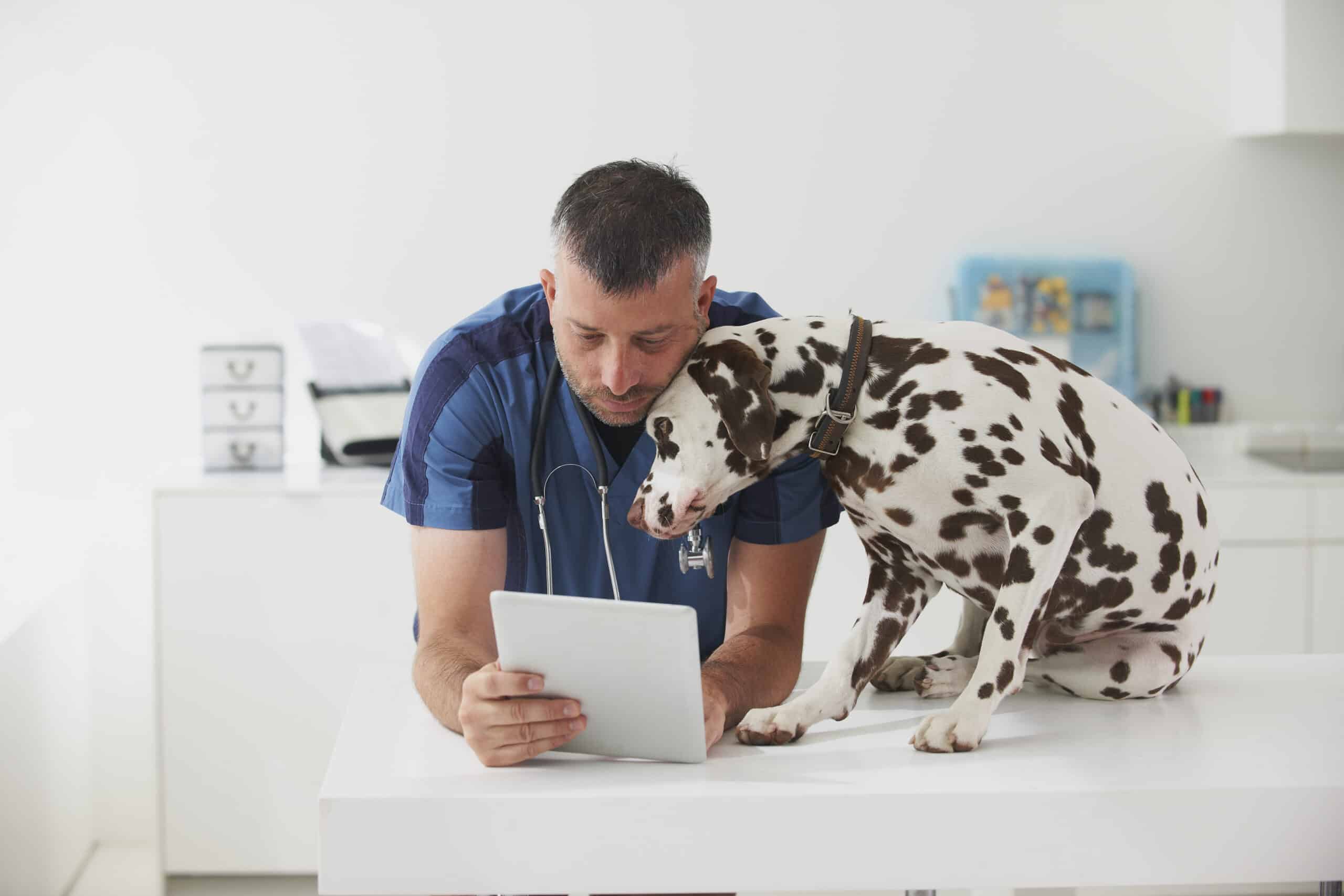Shake. Shiver. Tremble. Quiver. All describe the deliberate — and sometimes uncontrollable — body action by dogs.
Dogs shake their bodies for a variety of reasons that run the gamut from displaying utter excitement to fending off cold temperatures to dealing with a serious underlying medical issue.
Some causes of this body shaking are easy to identify, such as witnessing a noise-phobic dog tremble out of fear at the explosive sounds of thunder or fireworks. In other instances, the reason behind the body shaking may be hard to pinpoint. Case in point: dogs with congenital forms of epilepsy do not usually develop shaking seizures until they are around age 2.
Bottom line: Yes, many behavioral, medical and environmental reasons are behind body shaking in dogs. Never ignore or dismiss doggy shakes. Always consult your veterinarian to identify the cause, recommends Dr. Nicholas Dodman, a board-certified veterinary behaviorist, chief scientific officer at the Center for Canine Behavior Studies and best-selling pet author.
Dr. Lisa Radosta, a board-certified veterinary behaviorist who runs the Florida Veterinary Behavior Service clinic in West Palm Beach, Florida, agrees.
She advises pet parents to immediately report all specific clues they see, hear or smell in their shaking dogs. They also should describe the environments to their veterinarians in order to identify the reason and come up with possible remedies. Especially take action if your dog is shaking for more than 20 minutes, refuses to accept a treat or cannot be distracted, adds Dr. Radosta.
Let’s first identify some medical reasons and then highlight some behavioral and situational triggers.
Medical causes of dog shaking
Several medical conditions can spark uncontrollable shaking in dogs. These include:
- Addison’s disease: Medically called hypoadrenocorticism, this condition impairs the hormone production of cortisol and aldosterone hormones by the adrenal glands located near the kidneys. Intermittent body shaking as well as chronic diarrhea, increased thirst and weight loss are among the telltale symptoms. Many dogs diagnosed and treated with an injection medication and/or oral medication experience a good prognosis.
- Hypoglycemia: Dogs with this low blood sugar condition will often experience tremors, lose their appetites, feel weak and may even faint. Poor nutrition, cancer and liver failure are among the many possible causes. Treatment varies, depending on the identified cause.
- Epilepsy: While the cause of this brain disorder is unknown, there is a genetic predisposition in certain breeds, including Beagles, Cocker Spaniels, Golden Retrievers, Poodles and Siberian Huskies. During a seizure, a dog’s body stiffens and trembles heavily. The twitching convulsions can also occur in some dogs who ingest poisons. Veterinarians often prescribe anticonvulsant medications to reduce the number and severity of seizures.
- Shaker Syndrome: This neurologic condition is also known as generalized tremor syndrome and causes head and body tremors in some dogs. It is not known why, but most at-risk breeds are white and include Maltese, Poodles and West Highland White Terriers (Westies), but any breed can be affected. Veterinarians may prescribe corticosteroids to reduce episodes.
- Exposure to toxins: Uncontrollable body shaking can occur in dogs bitten by venomous snakes as well as by ingesting marijuana. Xylitol, an artificial sweetener, is in a growing number of foods, including peanut butter. The adverse reaction to xylitol is 100 times more severe than that of dark chocolate containing theobromine if ingested by dogs — and ingesting theobromine is bad. Treatment and recovery depend on the cause and promptness of veterinary care.
Preventive actions include keeping dogs on leashes in wooded areas where snakes are, keeping dangerous foods or plants out of a dog’s reach and carefully reading the labels of peanut butter and other foods/candies to ensure they do not contain xylitol.
Dog shaking as a sign of happiness, anxiety or fear
Our dogs experience a wide range of emotions, just like us. Some dogs gleefully do full-body wiggles when being reunited with a favorite person who has been away for a long time. This is definitely pure-joy wiggle action that indicates a strong friendship bond between the dog and the person.
Dr. Radosta calls this happy action in dogs as the noodle wiggle. Although the body is moving side to side, the muscles are relaxed.
However, many dogs do the shake off, quake or tremble due to feeling afraid, anxious or stressed. The sight and sound of thunderstorms, a noisy vacuum cleaner, the screech of a skateboard’s wheels or other noises cause a fight-or-flight mindset in some dogs.

Whether the threat is real or perceived, an affected dog reacts physically by pacing, whining, trembling, panting and even shedding excessively. A dog’s amygdala, the portion of the brain that controls emotions, releases fight-or-flight hormones, adrenaline and cortisol, explains Dr. Radosta.
Dr. Dodman, who has co-authored many behavioral dog studies on the impact of such emotions, shares his home with his now-senior dog, Rusty. He adopted Rusty as an 8-month-old from an animal shelter and quickly discovered that Rusty came with separation anxiety and a shaking, take-flight response to certain sounds and actions.
Rusty shook and ran into a corner as a young rescue whenever Dr. Dodman shook out a large plastic trash bag before putting it in the trash can in the kitchen, or whenever he removed his belt. Rusty also shook and fled the kitchen if hot, smoky oil from a frying pan set off the smoke detector.
Dr. Dodman patiently worked with Rusty to tone down those fears. He cautions pet parents to not dismiss or underestimate fears exhibited by their dogs. Untreated, fears can progress into phobias, defined as persistent, abnormal fears of a person or an object.
Treatment depends on the dog and the level of fear or stress displayed, notes Dr. Radosta, who treats many such dogs at her clinic. She encourages pet parents to assume that their dogs speak another language. This may encourage you to slow down and start to really observe your dog’s actions and sounds.
To help dogs who shake with fear, work with a qualified dog professional, including veterinarians, behaviorists and certified dog trainers. And, seek steady progress, Dr. Radosta adds.
Some dogs benefit when given over-the-counter natural calmers such as Zylkene, a hydrolyzed milk protein. Others may require stronger calming prescriptions. The most go-to ones prescribed by veterinarians are fluoxetine, gabapentin and trazodone.
Taking your dog on daily walks and working his brain with food puzzle challenges can also help elevate your dog’s sense of safety and calmness. These exercises release feel-good hormones called endorphins. So can playing a sound machine or classical music to muffle stress-triggering responses to hearing thunderstorms or fireworks.
Other reasons for dogs shaking
Many dogs do full-body shakes at bath time to rid their bodies of excess water. It’s automatic and helps a dog dry his coat to achieve a healthy body temperature. Dr. Dodman says that the frequency of their shaking depends on their size, but all furry mammals naturally shake to rid their coats of water drops.
Exposure to cold temperatures, especially for long durations, triggers uncontrolled shivering in dogs as their muscles flex and relax in an attempt to elevate their core body temperature. Hairless and thin-coated dogs are more at risk than dogs with thick coats and double coats.
Limiting a dog’s time in cold weather, fitting him with a properly sized sweater and wrapping him in a blanket indoors can counter the dangers of the cold temperatures. However, avoid vigorously rubbing his coat in an attempt to warm his body, as you may unintentionally worsen the spread of frostbite damage to the skin.
When two dogs play, one may stop and shake his body as a signal that he is done playing, adds Dr. Dodman.
And, some dogs twitch when they are sleeping. Like us, dogs go into three sleep stages: non-rapid eye movement (NREM), rapid eye-movement (REM) and short-wave sleep (SWS). Veterinarians and animal scientists theorize that dogs dream during the REM stage and act on their dreams by twitching or moving all four paws as if they were chasing a squirrel.
Avoid putting your hand on a sleeping dog as you risk injury from a startled dog who may reactively bite. Instead, call your dog’s name and speak to him calmly, allowing him to open his eyes on his own.
As you can see, dogs shake for a variety of reasons. Pay attention to their specific actions and places when shaking occurs, and report these findings to your veterinarian to come up with the best game plan to bring out the healthy best in your dog.





